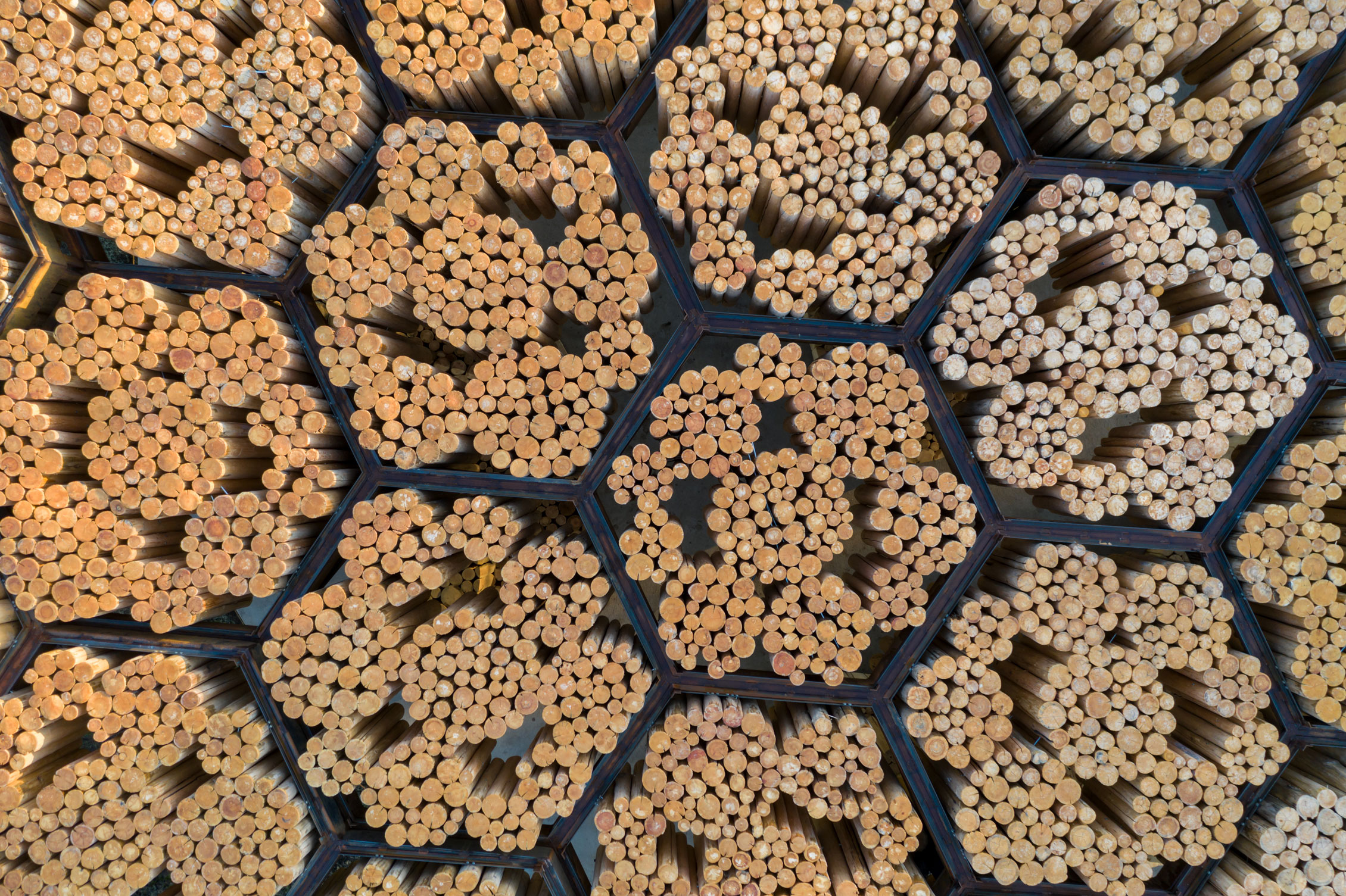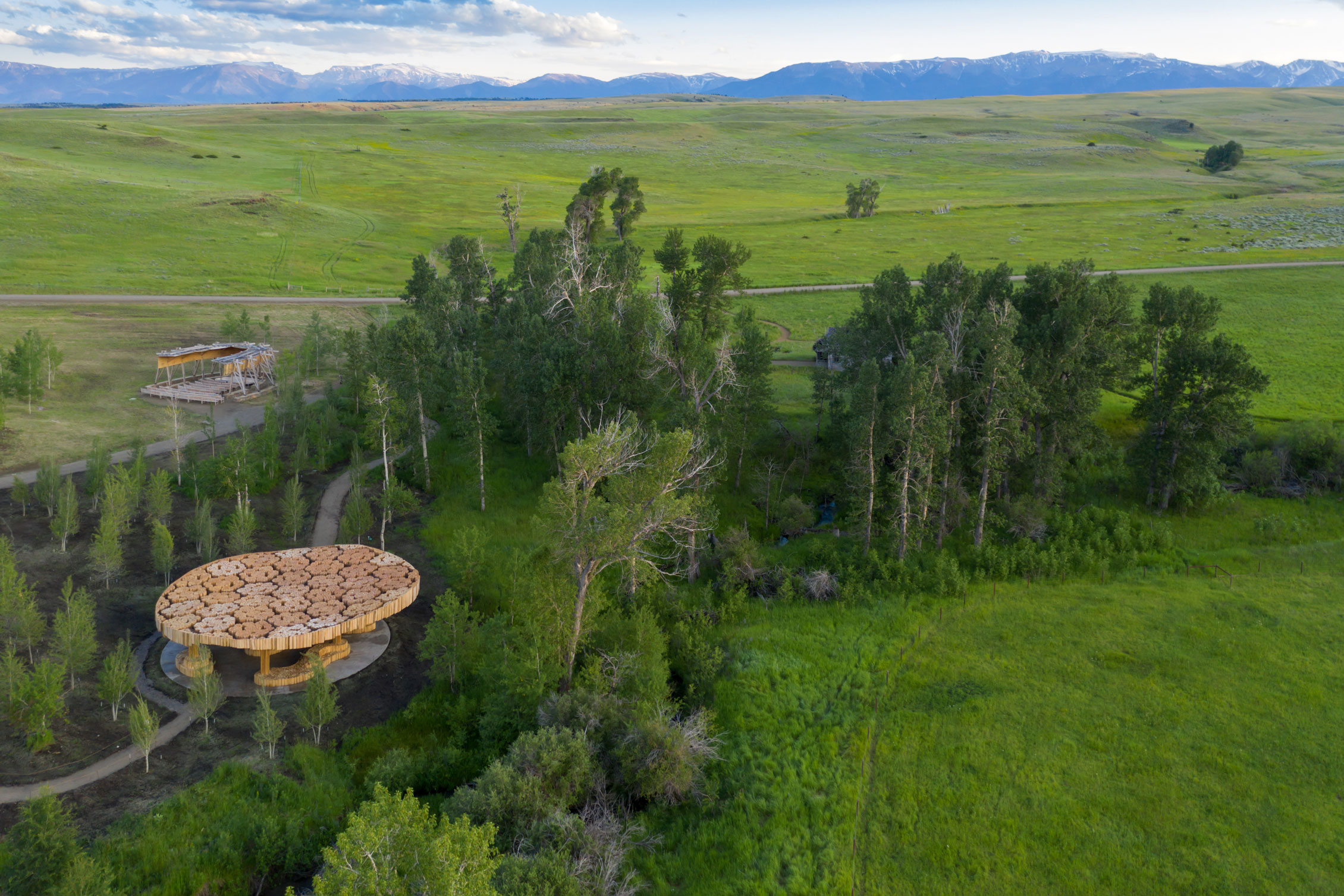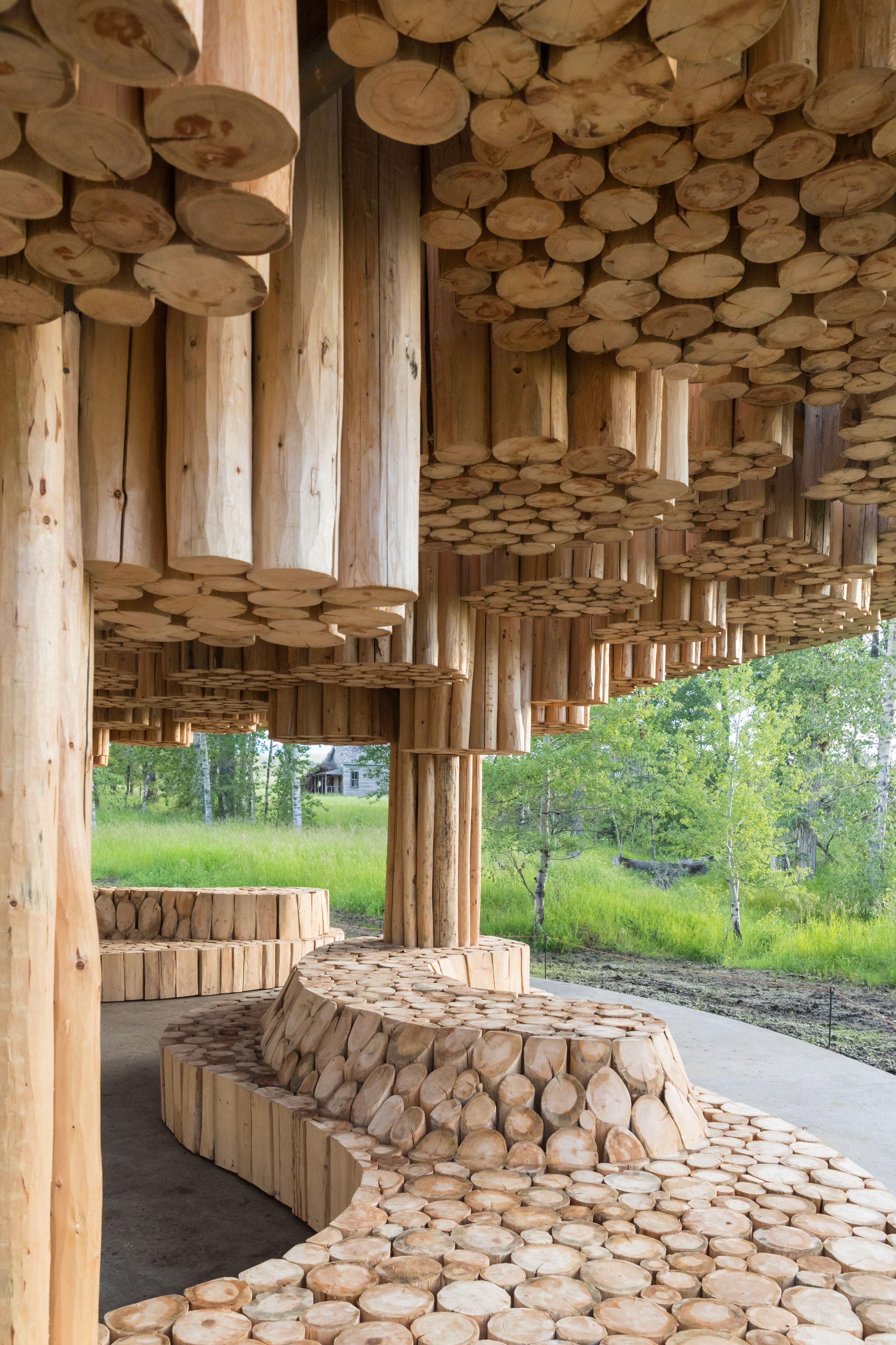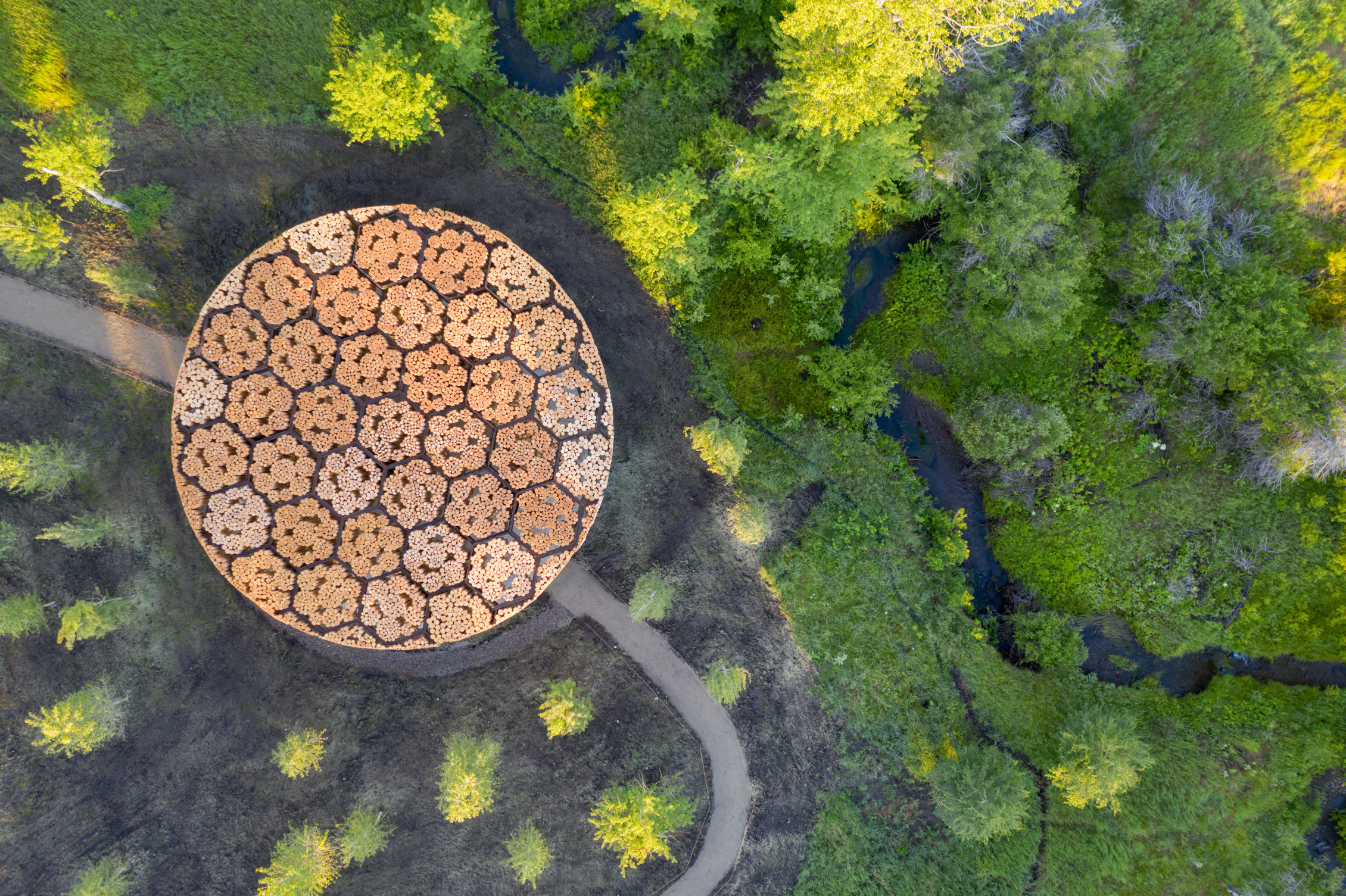
Set over 12,000 acres of a working Montana ranch, Tippet Rise Art Center is now in its fourth year of bringing art and music to the great outdoors. Founders Peter and Cathy Halstead spoke with Cultured’s Architecture Editor, Andrew Heid, about the relationship between art and the land and breaking down barriers between the two.
Can you talk a bit about Tippet Rise as it relates to the problems within your respective disciplines?
Peter Halstead: The fact that classical music concerts are less attended while a smaller space like Le Poisson Rouge, a nightclub, sells out every night, is part of what we are trying to respond to. The end game is not about great civic halls built to show civic pride—it’s not about being bigger. As a pianist, I’m interested in eliminating the barriers to performance. I don’t want there to be a stage.
You mean breaking down the theatrical space of the stage and the social space of the city?
PH: Yes, breaking down the thought of—
CH: Of separation, really creating a sense of belonging out of a sense of isolation.
PH: There’s a caste system—us and them, the audience and the musician. The musician comes in the back door and they eat in the kitchen.
CH: And then the opposite is true. In so many ways, people have become almost afraid of classical music because—
PH: It’s so elegant, it’s so elitist in a way. So we present them with things like Francis Kéré’s Xylem, which expands their minds. They say, what is that? How does that work with music? How does that work with nature? So we show them. We don’t know ourselves. We enjoy it for the exploration.
CH: We have the opportunity to really give people the chance to expand their own lives. None of us know how our lives are going to be touched, but we know that with the highest art, architecture and music if you assume that it’s open and for everyone, it becomes open and for everyone.

It’s interconnected. It breaks down the barriers between the individual and the collective.
CH: Yes.
How does that translate with art?
PH: We want to take art out of the museum, to take down the walls. There shouldn’t be walls. The Tiara is a concert hall with only the edge of the ceiling and the edge of the wall so you can see all around you, but hear as though you were in a beautiful hall because the acoustics. We really want to open up art and music to the land, and open the land to people from the city who don’t know about the experience of working on a ranch. As a pianist, I prefer to play outside. I’ve played in some awful locations with dreadful pianos because they’re outside. But I just love those locations. Even if there are critics, you feel free because you’re playing along with birds singing or the rain falling.
You don’t want people to hear every part of the note, because you want it to melt into the rain. To have the sounds of nature reinforce the sounds of artifice. As artists we should welcome that. How magical and what an act of God it is to have birds playing during a concert. Shouldn’t you include that in your recording? But nobody does, because we’re very strict about our music, very dramatic about it. We want to change all of that.
CH: Really only poetry can describe what is here on the land because it uses words in ways that are unexpected, not traditional, not bureaucratic—but as abstract and free-willing and celestial as what they’re describing. That’s what underlies all of this, it’s metaphor. The metaphor of land seen as art, the metaphor of art seen as music, the metaphor of music seen as sculpture.
And the metaphor of architecture.
CH: Yes, and the metaphor of architecture, which is art, which is music. It’s that space that exists between two concrete realities— the abstract idea of vision and thought. Keats said that when you have an idea and you go to write it down, by the time you’ve written it down, the idea is gone. And you’ve written something else but you decide to keep going until the original idea comes back, and maybe it never will. Maybe you have to write a thousand poems before you get that one poem that you caught by accident.

In the Eastern philosophy of shanshui painting, the Chinese literati would spend their entire lives traveling, seeing landscapes only to come back to their studio to do one brushstroke that encapsulated the entire landscape. To bring it back to these intractable problems within your own disciplines as an artist and musician, was there a specific moment within your discipline or the history of architecture that moved you?
CH: Yes, I would have to say when I first went to the Fondation Maeght was the moment when art and architecture really touched and became one. Where that small grove of trees overlooking the Mediterranean became an intrinsic part of the experience, what it was to walk through the inside and then come out into the courtyard. As I describe it I can feel what it felt like at that moment.
PH: I have two answers, one of which is the Tickon art center that is about five hours south of Copenhagen. You drive over bridges between three islands, and then you try to find it: there are no signs, it’s not marked. You finally go through this little tiny gate and get a map to try to find the sculptures. There’s nobody there, it’s like 200 acres, and it’s in a forest and there are meadows, and you realize that some of the sculptures have disintegrated into the ground—they’re made out of newspaper or wood and their time has come and they’re part of the earth. We were the only people there, and we said this is the ultimate sculpture park. It’s just you alone with your own thoughts of what it should be, what it could be, where is it?
CH: Of what it was and what it’s becoming.
PH: The other thing was the idea of Anthony and Cleopatra, where Anthony says, “I loved you but that’s not it.” It’s not just love that happened between them, there was something else in between the lines, and it’s what the Greeks call methexis, and you find it in many plays of Shakespeare. It’s the idea that in between Scylla and Charybdis is the concretization of thought made flesh—again the bridge, the metaphor, is what’s hidden in there. The sculptures that have disintegrated into the ground. I think it’s the reading between the lines that I wanted, in a Buddhist way I suppose, to make more readable, more visible—here by drawing the obvious lines between land and sky and sculpture. If you talk about it, nobody gets it. But if you build it, suddenly people start getting their own ideas about it and talking about it.

You can never remember what someone said, but you can always remember how they made you feel.
CH:Exactly.
PH:You put a tree on stage, but if you put a root on stage it doesn’t look like a tree at all. You have to make a phony tree, make it so it looks like a tree, and then people say, “Ah, it’s a tree.” But you’ve tricked them. There’s always a little artifice to art.




